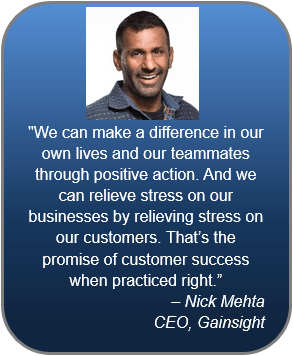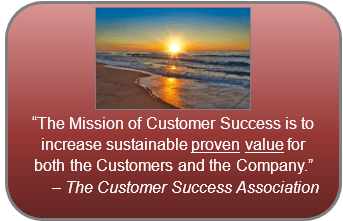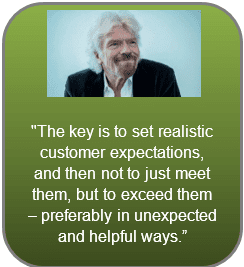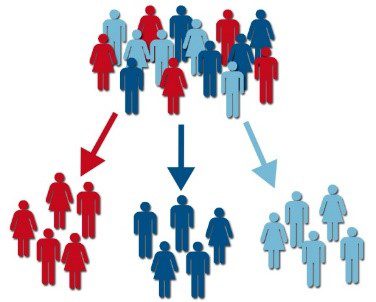
In mid-March, Nick Mehta, CEO of Gainsight, was ahead of the curve in 5 Reasons Why Customer Success is Existential during a Downturn. Although his blog was directed toward SaaS businesses, his fundamental points apply widely across B2B sectors with differentiated products or solutions. During uncertain times, the reasons to focus energy and resources on existing accounts and Customer Success are simple. As Mehta puts it,
- New sales will decline rapidly as fear slows new decisions.
- Your existing customers need your help.
- Your existing customers will notice who is there for them.
- Your existing customers will scrutinize outcomes and experience.
- Your existing customers will look to consolidate spend.
Without belaboring the obvious, that existing customers are cheaper to acquire than new customers, his conclusion is compelling: “…relieve stress on our businesses by relieving stress on our customers. That’s the promise of customer success when practiced right.”
The Experience So Far. Notwithstanding Mehta’s persuasive case, an analysis of COVID-related layoffs in TechCrunch seven weeks later reveals that the importance of Customer Success is not widely reflected in C-suite decisions. Approximately 30% of startup layoffs so far have been in sales, while approximately 22% of layoffs have been in Customer Success. Given that the ratio of sales spend to customer success spend in a startup usually exceeds 1.3 to 1, Customer Success teams are facing greater proportionate cuts than any other part of their organizations.
Why are Customer Success Teams Vulnerable? At one level, chopping Customer Success headcount is natural. As a distinct profession and role, Customer Success is a recent arrival, concentrated in software, and growing at an explosive rate. Yet, existing account management, support, and implementation services have been an important ingredient in B2B customer relationships across multiple sectors for many decades. Casual observation of technology, manufacturing, healthcare, services, and other innovative businesses suggest that those who deliver “Customer Success,” whether in name or in principle, are highly and widely exposed in the current climate.
Reducing resources focused on existing customers undoubtedly subjects innovative businesses to discontinuity and setbacks. As the sectors most likely to drive future economic growth, these businesses’ willingness to dial down customer-facing capabilities reduces their ability to rebound quickly. Most C-suites realize this, yet they are still making the decision to chop. Either they believe that existing accounts are over-resourced, or they are skeptical that Customer Success is being “practiced right.”
Customer Success Practiced Right. What is going wrong in Customer Success? Nick Mehta has emphasized the difference between Intuitive and Predictive Customer Success Management (CSM), highlighting the need for data, and maintaining that Customer Success Management start with a “scientific approach day from Day One.” He translates this scientific approach into a need for “health scores.” Mehta is clearly thinking SaaS, where a big data approach is natural. This is a world where Customer Success got its start in understanding customer data, especially data coming from the SaaS solutions themselves. But information about customer use is broadly available in other innovative sectors, coming not only from products that capture data, including the internet of things, but also residing in CRMs, pricing tools, ERPs, and sales presentation files.
Big data is interesting, but there is a limit to using last year’s weighted health scores in a pandemic, no matter how good your AI engines or your statistical methods. This year’s renewals will be different from last year’s renewals, as customers grapple with the downturn. Relying on readily observable user metrics loses sight of why a buying group bought your product in the first place, or why a downsized or reorganized customer team will decide to renew their business with you.
 Customers need to see outcomes. Lincoln Murphy put it succinctly: “…churn is just a symptom of an underlying disease. That disease is that our customers are not achieving their Desired Outcome.” The Customer Success Association definition of the profession is more specific about the outcomes that matter. “Customer Success is a long-term, scientifically engineered, and professionally directed strategy for maximizing customer and company sustainable proven value.” The Desired Outcome of Customer Success is the realization of customer value. Value is measurable. To practice Customer Success scientifically, professionals working with existing accounts need to be able to quantify, demonstrate, and sell the financial value they deliver, post-purchase as well as pre-purchase.
Customers need to see outcomes. Lincoln Murphy put it succinctly: “…churn is just a symptom of an underlying disease. That disease is that our customers are not achieving their Desired Outcome.” The Customer Success Association definition of the profession is more specific about the outcomes that matter. “Customer Success is a long-term, scientifically engineered, and professionally directed strategy for maximizing customer and company sustainable proven value.” The Desired Outcome of Customer Success is the realization of customer value. Value is measurable. To practice Customer Success scientifically, professionals working with existing accounts need to be able to quantify, demonstrate, and sell the financial value they deliver, post-purchase as well as pre-purchase.
Refocus Customer Success on One Question. To drive proactive customer interactions with existing accounts, teams need to be ready to provide a good answer to the customer question. This question is more fundamental than questions about usage and health indices:
How much specific customer value do you deliver to us?
 Ducking the value delivered question by redirecting your answer to where you have data – product use, time spent, and activity reports – will lack impact. Usage and activity data, on their own, lack substance unless they are translated into customer outcomes and value. Answering this question with anecdotes or unquantified customer benefits may be more on point, but does not provide enough data to support actions or decisions in your favor. A good, general, quantitative answer is better as it provides details about the magnitude of the value you deliver. A specific quantitative answer to the value question for each customer is strongest of all, focusing on the problems each customer cares about, consultatively understanding each customer’s business, and quantitatively supporting each customer’s business case to renew and/or upgrade.
Ducking the value delivered question by redirecting your answer to where you have data – product use, time spent, and activity reports – will lack impact. Usage and activity data, on their own, lack substance unless they are translated into customer outcomes and value. Answering this question with anecdotes or unquantified customer benefits may be more on point, but does not provide enough data to support actions or decisions in your favor. A good, general, quantitative answer is better as it provides details about the magnitude of the value you deliver. A specific quantitative answer to the value question for each customer is strongest of all, focusing on the problems each customer cares about, consultatively understanding each customer’s business, and quantitatively supporting each customer’s business case to renew and/or upgrade.
Whether or not your sales team acquired your customers initially based on a value conversation, the stronger your Value Proposition, the better your Customer Success team’s answers to the value delivered question for existing customers, and the better your chances of renewals and upgrades.
Five Ways Customer Value Clarifies Existing Account Management. Making customer value central drives Customer Success teams to focus on outcomes. With focus comes clarity.
 1. Customer Value Clarifies Goals. When your Customer Success team quantifies value, they are required to understand the relationship between your solution and customer outcomes. They see which outcomes add the most value and understand which outcomes matter to each customer. Account by account, this helps to establish specific goals. These fundamental goals help to eliminate the potential noise that comes from too many metrics on a dashboard and irrelevant metrics that are inappropriately included in a customer health index.
1. Customer Value Clarifies Goals. When your Customer Success team quantifies value, they are required to understand the relationship between your solution and customer outcomes. They see which outcomes add the most value and understand which outcomes matter to each customer. Account by account, this helps to establish specific goals. These fundamental goals help to eliminate the potential noise that comes from too many metrics on a dashboard and irrelevant metrics that are inappropriately included in a customer health index.
If, as Custify suggests, the biggest challenge in starting a Customer Success program is “…to figure out how customers define success,” deploying a flexible post-sale Value Proposition is critical in any goal setting or goal monitoring conversation with a customer sponsor. The specific Value Proposition then becomes a critical reference point in setting up onboarding programs and in conducting QBRs (Quarterly Business Reviews). Value Propositions answer the “why” and “so what?” questions of new customer team members who are trying to understand why they need to devote time and attention to learning and using a product successfully.
 2. Customer Value Clarifies Expectations. A well-quantified Value Proposition has to be specific in how value is delivered. This granularity not only helps fill out a picture of good implementations, it also sets expectations for necessary deliverables. For any product or solution, some of the deliverables will be provided by the seller and some will be provided by the customer. Having a proactive and ongoing conversation about deliverables is the basis for ongoing customer collaboration to monitor progress and refine plans. Value and deliverables become inseparable.
2. Customer Value Clarifies Expectations. A well-quantified Value Proposition has to be specific in how value is delivered. This granularity not only helps fill out a picture of good implementations, it also sets expectations for necessary deliverables. For any product or solution, some of the deliverables will be provided by the seller and some will be provided by the customer. Having a proactive and ongoing conversation about deliverables is the basis for ongoing customer collaboration to monitor progress and refine plans. Value and deliverables become inseparable.
Explicit conversations about how value is delivered also clarify: (a) the relationship between results and project plans, (b) when to expect results, and (c) how the impact of a solution increase over time. Setting these expectations helps to insure a smoother process for monitoring activities, measuring outcomes, and changing course as uncertainties and delays arise. Better expectation setting aligns buyer and seller earlier on what is achievable.
 3. Customer Value Clarifies Segments. Segmentation is not just a pre-sale marketing discipline. In Customer Success, segments are sometimes identified based on account size or needs primarily as a way for Customer Success teams to allocate resources. But good segmentation can provide much more than time management. Post-sale segmentation of accounts is an important challenge and opportunity that can help organize playbooks, improve the effectiveness of implementation programs, and enhance the relevance of support, services, targeted content, and ongoing conversations.
3. Customer Value Clarifies Segments. Segmentation is not just a pre-sale marketing discipline. In Customer Success, segments are sometimes identified based on account size or needs primarily as a way for Customer Success teams to allocate resources. But good segmentation can provide much more than time management. Post-sale segmentation of accounts is an important challenge and opportunity that can help organize playbooks, improve the effectiveness of implementation programs, and enhance the relevance of support, services, targeted content, and ongoing conversations.
Beyond account size and needs, the most widely used approaches to Customer Success segmentation are based on customer use cases and/or customer problems solved. Value-based segmentation is a useful framework that enhances and supplements these more intuitive approaches. Organizing implementations and QBRs with an eye on a Value Proposition retains the needs you address, the problems you solve (and how they resonate), and your use cases as part of the customer conversation, but also helps to prioritize activities and deliverables based on value targets.
4. Customer Value Clarifies Decisions. For some Customer Success teams, focusing their customer conversations on value delivered can be scary. Accountability for delivering outcomes is more challenging than accountability for delivering activities based on a project plan or a punch list. Whether Customer Success teams like it or not, most customer sponsors expect the delivery of outcomes. If sponsors don’t expect value, their finance and procurement departments will demand it, asking ROI and value questions as they review budgets and approve contracts. Especially in the midst of a business downturn.
 Value Propositions focus Customer Success discussions and QBRs on value delivered. The Value Proposition itself provides the business rationale to make a positive decision, to purchase, to renew and to pay a reasonable price. “Discuss value in Q2, price in Q4” is a customer relationship mantra that we hear in various forms from many world-class manufacturing companies. By talking value regularly in customer interactions, the stage is set for more streamlined renewal decisions and simpler upgrade decisions. Customer value conversations in Customer Success dialogs help shape consensus decisions on priorities for the coming year. “Let’s agree to our value target and decide how to get there.”
Value Propositions focus Customer Success discussions and QBRs on value delivered. The Value Proposition itself provides the business rationale to make a positive decision, to purchase, to renew and to pay a reasonable price. “Discuss value in Q2, price in Q4” is a customer relationship mantra that we hear in various forms from many world-class manufacturing companies. By talking value regularly in customer interactions, the stage is set for more streamlined renewal decisions and simpler upgrade decisions. Customer value conversations in Customer Success dialogs help shape consensus decisions on priorities for the coming year. “Let’s agree to our value target and decide how to get there.”
 5. Customer Value Clarifies Collaboration. Customer collaboration is central to the existence of a Customer Success function or an account management function, especially for complex or innovative solutions. At one level, discussing, refining, and updating the data in a Value Proposition is a collaborative endeavor in itself, that invites a customer stakeholder to participate, trusting the Customer Success professional with business information, while they talk about their operations and their Value Propositions are customer-centric.
5. Customer Value Clarifies Collaboration. Customer collaboration is central to the existence of a Customer Success function or an account management function, especially for complex or innovative solutions. At one level, discussing, refining, and updating the data in a Value Proposition is a collaborative endeavor in itself, that invites a customer stakeholder to participate, trusting the Customer Success professional with business information, while they talk about their operations and their Value Propositions are customer-centric.
At the next level, Value Propositions support a collaborative, trusted advisory relationship, as Customer Success professionals consistently demonstrate that they understand the customer’s business and the customer’s problems as they discuss and revise Value Propositions.
Finally, when regular Customer Success conversations are explicitly about the customer realizing greater value, there is not much doubt that seller and buyer are aligned. As offering packages and prices increasingly include ex-post, value based contracting in many fields (including healthcare, chemicals and services), there is no doubt that customer and account managers will succeed or fail together based on customer value realized.
The Next Normal: Value Propositions in Customer Success. Customer value conversations will accelerate as uncertainty persists in the coming months and quarters.
 Customers will be under heightened financial pressure to negotiate price or to cut expenses. Your teams need to deliver and talk measurable value. This will reduce the number of tough customer conversations at contract renegotiation time. When value conversations occur, your team can talk value first, then price.
Customers will be under heightened financial pressure to negotiate price or to cut expenses. Your teams need to deliver and talk measurable value. This will reduce the number of tough customer conversations at contract renegotiation time. When value conversations occur, your team can talk value first, then price.- Customer teams face reorganizations – your current stakeholders may or may not be on the bubble. Even if your original sponsor bought into your product vision, their new approval process may hinge on what you deliver financially. Even if you sold a solution based on your technical capabilities and implementation program, the politics of your renewal may pivot on new people who may not be up to speed on product details, insisting instead on outcome metrics and measurable ROI.
- Your customers face heightened uncertainty in their personal lives, and in how they will interact with you and your colleagues. Sustaining their attention will be correspondingly more difficult. Your Customer Success team needs to engage customers with focused memorable content that keeps them participating, whether they are online or in the room. Digital, interactive Value Propositions turn one-way monologues into two-way, interactive collaboration.
Your Customer Success and existing account management needs to rise above activity plans and big data. Be proactive, not reactive. Customer Success is Customer Value delivered.

